 Automated driving is a hot topic in recent years. It is recognized that autonomous driving is the development direction of the future automotive industry. Whether it is Tesla's Autopilot system or the previous stage of Audi's new A8's L3-class autonomous driving technology, it highlights the exploration and pursuit of automatic driving by new and old depots. And technology companies such as Google, Uber, Apple, Baidu, etc., have also joined the field of autonomous driving, laying out the future of the automotive industry.
Automated driving is a hot topic in recent years. It is recognized that autonomous driving is the development direction of the future automotive industry. Whether it is Tesla's Autopilot system or the previous stage of Audi's new A8's L3-class autonomous driving technology, it highlights the exploration and pursuit of automatic driving by new and old depots. And technology companies such as Google, Uber, Apple, Baidu, etc., have also joined the field of autonomous driving, laying out the future of the automotive industry.
However, the current autonomous driving technology is more on the passenger car (including ordinary cars, SUVs, MPVs), and in the transportation industry, trucks also occupy an important part. In the event of a car accident at a high-speed truck, the consequences are not terrible, as explained at the beginning. So, is there a solution that can avoid or reduce the damage caused by truck accidents as much as possible? In recent years, major automakers and technology companies have turned their attention to autonomous driving.
Six auto-driving truck companies worldwide1. Tesla: a self-driving truck like a sports car
Tesla, the world's leading electric vehicle manufacturer, announced on the 10th of this month that it has obtained permission to conduct self-driving truck tests in Nevada. According to Musk, Tesla Semi will be a "heavy, long-range, semi-tractor truck with the highest load and long-range life, a truck that has never been seen before." He added, "Tesla Semi will use A bunch of Model 3 motors, when testing a prototype, feel like driving a sports car."

For the time being, don't explore the authenticity of Musk. If Tesla's project is successful, it can significantly reduce the fuel and maintenance costs of truck companies. More importantly, the cost of hiring drivers can be saved, and driving safety can be guaranteed to the greatest extent. After all, the safety of autonomous driving has been recognized worldwide.
At present, Tesla Semi is only a planned autonomous truck, and we have no way of knowing the specific model and parameters. According to the news from the foreign media, Tesla Semi does not have a mirror installed. It was replaced by a camera, which fully proved the automatic driving function of Tesla's first electric truck. According to Musk, Semi will become an important model for Tesla in the future.
2, Otto: L4 automatic driving truck
In August 2016, Uber acquired a self-driving truck startup called Otto for more than $680 million. It is a reasonable thing for Uber to enter the autopilot business because of its own network car business. Then, this Otto autopilot truck company has attracted some of the originator of the network car.
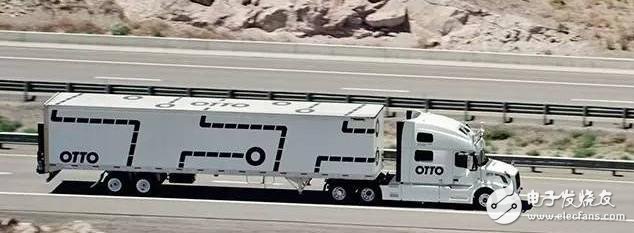
Otto was founded in January 2016 and specializes in the research of self-driving trucks. It is understood that their technology allows the autopilot system to take over the vehicle on the highway and return the driving rights to the driver while driving out of the highway, which can help alleviate the workload of long-distance truck drivers.
Otto is still developing driverless truck technology, but last fall, the first commercial order was completed: more than 120 miles (about 193 kilometers) in Colorado, and 5,000 cans of Budweiser were delivered. The destination also earned $470.
During the entire driving process, the driver only needs to press the “engage†button on the highway. The truck will be in L4 (L4 automatic driving means the vehicle is completely self-driving and managing, and in a small part, the driver needs to be involved) Traveling in an automatic driving state.

From the exposure photos, three laser radars were installed on the Otto self-driving truck cab and trailer, radar was installed on the bumper, and a high-precision camera was fixed above the windshield. Inside the cab, there are various buttons that can disable the autopilot system, as well as computer systems that can navigate in real time, but the system requires human monitoring.
3. Daimler: the world's first listed driverless truck
Strictly speaking, the Freightliner InspiraTIon is a semi-automatic truck, in other words, under certain conditions, it will be driven automatically. Only when the truck is driving on the highway, the system will start after the latest situation, and then the truck will keep a safe distance from other vehicles and stay in the lane.

If you want it to change lanes for overtaking, it is clear that the autopilot system will not agree unless you take over the vehicle yourself. In addition, in case of heavy snow, the lane line is not clear, the truck will issue an alarm asking the driver to take over the vehicle.
The Freightliner InspiraTIon weighs about 40 tons and is a technologically advanced Freightliner (a well-known American trucker) truck. In order to develop the truck, Daimler formed a team of dozens of engineers, which took six months to develop, and finally let the truck drive on the road in Nevada.
In terms of appearance, inspiraTIon seems to be no different from other trucks. The radar is installed in front of the cab, the camera is mounted on the windshield, the upper stereo camera is mainly used to identify the lane line, and the short-range and long-range radars are embedded in the grid, just above the license plate, which can be used to scan the farthest. An obstacle within 800 feet (about 243 meters).
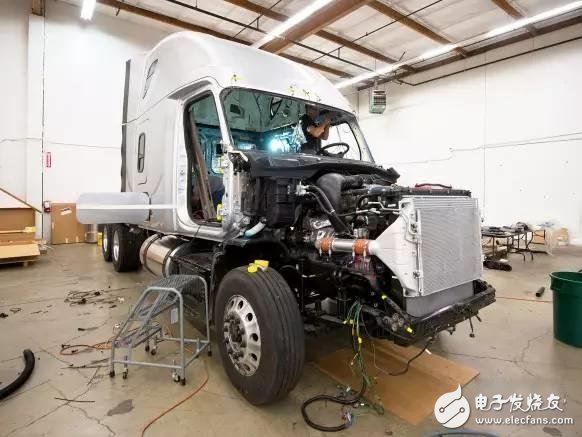
Interestingly, the car is not equipped with a reversing sensor, there is no communication between vehicles, and there is no lidar. The software algorithm used is still from the Mercedes-Benz self-driving passenger car, but the program has been adjusted.
Daimler is the parent company of Mercedes-Benz. For the past 20 years, it has been working on the development of self-driving cars. Most of InspiraTIon's technologies, including radar and camera, computing technology, electronic architecture, etc., can deviate from lane warning and adaptive cruise. Find the source in the control technology.
However, when developing Inspiration, the company upgraded the system to allow the truck to automatically adjust its speed. Akzenbach, senior vice president of engineering and technology at Daimler, said that the underlying electric architecture of the Inspiration truck is a bit like a satellite center control hub.
In general, the vehicle's speed control and lane keeping are all run by the car itself, but the central equipment monitors the operation of each component and makes high-level decisions (such as when to tell the human driver that the car should be taken over).
It should be noted that Freightliner Inspiration is also the world's first authorized semi-automatic truck.
4. Waymo: Automated driving truck like Optimus Prime
When it comes to autonomous driving, it is inevitable that you will move out of Google. In early June of this year, Google's autopilot company Waymo confirmed that it was developing rumors of self-driving trucks, but did not release more content. Soon after, the foreign car blog Jalopnik showed a photo of a group of Waymo home autopilot trucks.
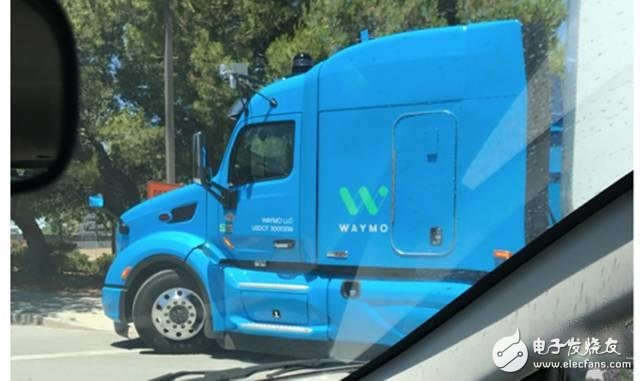
From the picture, the truck was modified based on Peterbilt's 579 truck, and the famous Optimus Prime was based on the modification of the Peterbilt 389. It can be said that the two are cousins. On the roof of the truck, a black shelf was mounted with a lidar and two millimeter-wave radars. And above the license plate, there is also a millimeter wave radar.
Although the quality of the exposed photos is not high, it is impossible to know which sensors are installed in the vehicle. However, according to Waymo’s experience in autonomous vehicles, the roof of the truck must have a GPS positioning module on the windshield. There are camera matrices for identifying traffic lights and lane lines. There should be some short- and medium-range millimeter-wave radar and close-range ultrasonic radar on the rear and sides of the vehicle.
Although there is no news about Waymo's self-driving trucks, Google, the pioneer of the autonomous driving industry, is bound to provide more technical and experience support for its self-driving trucks.
5, Volvo: multi-scene auto-driving truck
Volvo is also developing autonomous trucks. The difference is that Volvo clearly has greater layout and ambition.
On September 5, 2016, Volvo first publicly demonstrated its own self-driving truck technology. There are three Volvo trucks on the scene, the trucks in front of the team need to be led and controlled, and the two cars in the rear can be driven automatically.
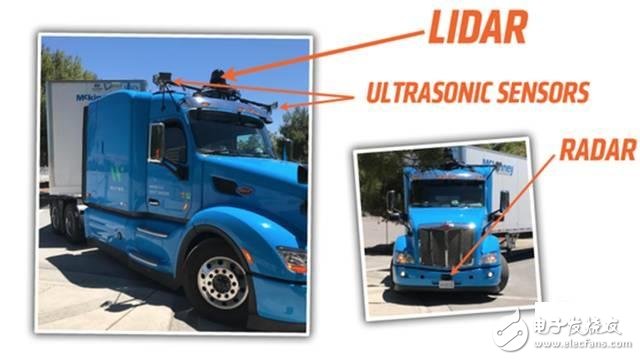
It is understood that the distance between each car is relatively close, one second apart, three trucks can choose their own spacing, but must be guaranteed in the middle, that is, the three trucks using this technology are synchronized, the distance is fixed. .
In addition to developing cargo trucks for the logistics industry in the commercial vehicle sector, Volvo has also designed autonomous trucks in a variety of special fields.

Also in Sweden last year, Volvo tested its own self-driving truck in a 1,320-meter-deep mine in the north. It should be noted that this is also the world's first self-driving truck for underground mines. It is understood that the self-driving truck is equipped with multiple laser radars, based on the GPS navigation system and high-precision mine map uploaded to the on-board computer system, enabling the vehicle to travel smoothly in a weak light and complex terrain.

Not only that, but Volvo also worked with a Swedish waste recycling company this year to develop an autonomously driven garbage truck to save manpower and material resources. This self-driving garbage truck is equipped with a 360-degree camera and sensor that avoids obstacles when moving forward and backwards, and can stop in time even in the event of an emergency.
When the truck is in operation, it will receive maps and roads sent by local base stations after entering the street area. Combined with real-time GPS technology, it can realize automatic driving on the street.
In addition to the above two trucks, Volvo has also developed an autonomous truck that assists in harvesting crops. The working principle is similar to the above two trucks, and requires GPS and high-precision gyroscopes and high-precision map support.
In this way, autonomous trucks are not only promising in the commercial field, but also in the proprietary field.
6, Tucson's future: domestic auto-driving logistics truck
Tucson's future is a technology company in Beijing that is positioned to provide operators with automated driving technology for logistics and transportation, providing carriers with L4-level autonomous driving on restricted road sections.
Specifically, Tucson, as a transportation service provider, will propose to the upstream car manufacturer a customized solution including sensor solution configuration, data fusion, decision analysis, and control flow according to customer requirements, and then sell the car to the customer, and Subsequent to assume the safety responsibility of the vehicle, as well as the software system update for high frequency and hardware upgrades for two to three years.

Unlike the industry's leading driving system developers with 64-line lidar-based sensors, Tucson uses a computer vision-aware solution similar to Tesla's Autopilot. At the same time, on the sensor, Tucson used GPS, IMU, five cameras and four millimeter wave radars.
It is worth mentioning that on August 3 this year, Tucson will get the investment of video card giant Nvidia in the future, which also illustrates the feasibility of the self-driving truck program. Third, the gameplay is different, the strategies are different
After carefully reading the above six representative companies, it is not difficult to find out the difference in their self-driving trucks.
1, hardware configuration is different
The above six can be easily divided into two factions: using lidar and not using lidar. The former includes Waymo, Otto and Volvo, while the latter includes Tesla, Daimler and Tucson. At present, the mainstream autonomous driving scheme will use laser radar as its "eye". However, due to the high cost and the difficulty in mass production, the laser radar inevitably increases the cost of autonomous driving. In contrast, Tesla and Tucson's future autopilot solutions use computer vision sensing solutions, and rely on sensors such as cameras and millimeter-wave radars to achieve better results.

2. Different vehicle application fields
Most of the self-driving truck companies focus on commercial truck research, and in general, are focused on truck development in the logistics industry. But by contrast, Volvo appears to be more "alternative." While conducting commercial truck research, Volvo also focuses on the development of self-driving trucks in dedicated areas. Such as self-driving mining vehicles, self-driving garbage trucks and self-driving crop transport vehicles. The simultaneous advancement of multiple fields demonstrates Volvo's ambitions for autonomous driving and is a special feature of Volvo's autonomous driving program.
3. Different automatic driving schemes
Volvo has to be mentioned again here. Unlike other players, Volvo has demonstrated the driving status of its own self-driving trucks: aligning, keeping the interval, and advancing simultaneously. The advantages of this solution are obvious: queued forwards can reduce windage, help reduce energy consumption by following vehicles, and synergy between vehicles can maintain fleet stability. Tesla's newly announced autopilot truck program also mentions the "follow-up" program, which is similar to Volvo's approach. This kind of scheme is similar to the migratory geese. It has a “head geese†to lead, and other geese follow, which can minimize consumption and maintain overall speed.
4, the vehicle power form is different
The above six, outside Tesla are using traditional energy drivers, while Tesla Semi is powered by electricity. Compared with traditional energy sources, electric drives are cleaner and energy conversion is more thorough. The success of Tesla's electric vehicles proves the feasibility of electricity in truck power. Similar to Tesla, domestic automakers such as BYD, Dongfeng, and FAW also have their own electric truck products. According to actual results, the electric truck scheme is completely feasible. The difference is that Tesla has added an automatic driving solution based on the electric truck.
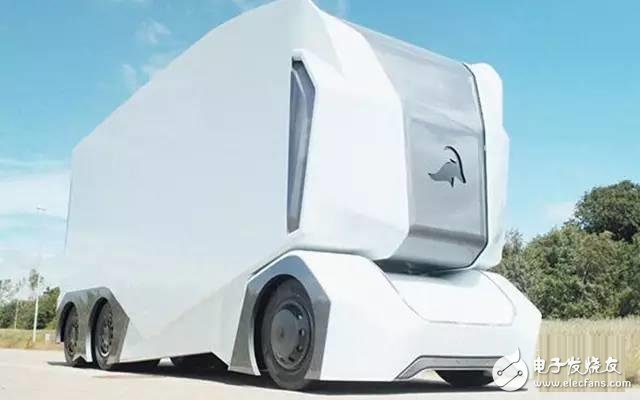
The challenge of self-driving trucks
However, self-driving trucks also face this considerable challenge, mainly in the following three aspects.
Policy restrictions, there is no clear legal regulation for autonomous driving around the world, and many countries do not even allow self-driving cars to go on the road, not to mention automated truck testing on the highway. Even in the United States, where the policy is relatively loose, there are considerable restrictions on autopilot testing. Policy restrictions make autopilot truck testing only available at specific locations, which makes testing non-universal.
Technical limitations, from the inventory point of view, the current autonomous drivers are mainly concentrated in passenger cars, whether it is a traditional car factory such as Audi BMW or a new car company such as Tesla, automatic driving is more applied to small cars such as cars and SUVs. . At this stage, the self-driving truck technology is more transformed from the passenger car program, and the solutions specially designed for trucks are few and far between.
There is a shortage of funds, and autonomous driving is a relatively expensive project. Whether it is a laser radar or a high-precision map, there is ample financial support behind it. Only a sufficiently strong company can conduct autopilot tests, which leads to a higher threshold for autopilot trucks, and it is currently unable to form large-scale production and use.
It seems that the development of self-driving trucks is still facing a lot of pressure. But it is undeniable that with the maturity of autonomous driving technology, more and more favorable conditions are being formed. It is reasonable to believe that in the near future, autonomous trucks can undertake more transportation tasks and run on the highway. Conclusion: Automated trucks that are about to change industry
So far, the vast majority of autonomous driving is still in the testing stage, although you have the opportunity to take Uber to a driverless car near Pittsburgh and take an unmanned taxi in Singapore, but after all, it is impossible to reach it in large numbers in daily life. Autopilot.
Undoubtedly, the advancement and maturity of technology will definitely bring about innovation in the industry. For example, once the self-driving truck technology is matured and promoted, it will bring serious challenges to truck drivers, and it is possible to change the shipping route, schedule and delivery time.
Autopilot trucks also affect regulators, legislators, insurance companies and many other industries. So this is a big event that is systematic and has connections in many areas. From another perspective, autonomous trucks can take advantage of the queue, which has a positive impact on saving resources, saving money, and protecting the environment.
All in all, autonomous trucks have a huge impact on the entire transportation industry and can even change the landscape of the industry.
In the e-bike market where innovative, minimalistic designs are talk of the day, we see that manufacturers are constantly looking for smart electrical wiring systems and reliable connections to support these developments. With years of experience with our e-bike customers, we have already worked successfully around themes like the integration of brake & signal, battery and number plate lighting, high power electrical connection.
Related products:bike wire assembly, ebikes connector,e-bike cable assemblies, waterproof e-bike cable, waterproof e-bike connector
bike wire assembly, ebikes connector,e-bike cable assemblies, waterproof e-bike cable, waterproof e-bike connector
ETOP WIREHARNESS LIMITED , https://www.etopwireharness.com